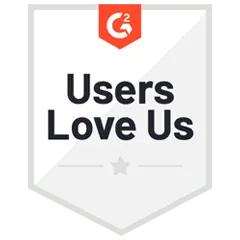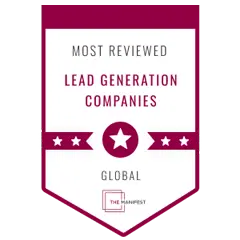Non-tech companies have a lot of cutting-edge solutions at their disposal, and it’s only a matter of knowing which one to implement to increase their lead generation capabilities.
Even if they’re based on tech, a lot of them can be used for non-tech providers.
In this guide, we look at what non-tech companies can do to ensure that they have a steady stream of leads coming in to enhance their growth potential. All of these strategies can be leveraged together or as standalone branches boosting existing lead generation systems.
Chatbots With Sales Functionality

As we move toward a more digitized future, all companies – tech or non-tech – need to have a website. It serves as the leading portal of any company, showcasing products, providing after-sales support, and informing potential customers about what they offer.
We’ve all heard of chatbots for customer support, but companies can leverage this technology a step further with chatbots with sales functionality.
This means a potential prospect landing on a website can interact with a chatbot to help “guide” them through your products and make a sale. Companies can program the bot to find out what the prospect needs, provide options, and even answer FAQs.
Here’s the kicker.
If the company has a more specialized product that requires a more personalized pitch, the chatbot can be programmed to qualify prospects and then book a call with a lead generation specialist on your team.
Using chatbots in this way allows for more efficiency in the sales process and cost savings. Furthermore, you get to have a more interactive touchpoint for prospects who have happened to land on your website.
Related: B2B Lead Generation Across Channels
Facebook Retargeting Using Pre-Suasion

Facebook ad retargeting is one of the most powerful ad tools that non-tech companies have at their disposal because it allows them to target their ideal customer profiles (ICP) directly. However, companies can take this a step further by targeting people before they even start marketing.
This is helpful if they want to run a brand awareness and education campaign before the first touchpoint. Customers are already familiar with what they have to offer before receiving the offer.
It reduces the friction in lead generation as potential prospects are less reluctant to shy away from outreach if they are already familiar with the brand that’s communicating with them.
Robert Cialdini coined the term pre-suasion, and it’s used to explain what you do before attempting to persuade another party.
This particular technique is beneficial for non-tech companies dealing with B2B customers.
Use Your Social Networks …Personally
Many companies are taught to use their social media networks to promote the content that they have; while it does still work, a more effective approach is to turn team members into brand ambassadors for the company.
Team members can promote products, become mini-influencers, and engage with people more personally, and it works because of human nature. People would rather interact with people rather than a brand’s entity.
Using social networks via brand ambassadors helps make a brand more personable and easier to interact with. Prospects will see the value that a company places on relationships, and they’ll be under the impression that a company is easy to talk to.
B2B Influencers

While we’re on the topic of brand ambassadors, many tech and non-tech companies should start to take advantage of B2B influencers and thought leaders to promote their products. B2B influencers command their small market shares already segmented, are trusted in the community, and have lower talent fees than their B2C counterparts.
Another critical thing to note about B2B influencers is the social proof that it brings to any tech or non-tech company; in essence, their expertise and “trust” is ported over to the company they are supporting, so you benefit from “trust by association.”
Using social proof for lead generation is critical because building “trust” is one of the most challenging things to do in any business relationship.
It’s also reported that B2B brand ambassadors are more cost-effective than B2C, so it’s something they can look into.
Use Webinars

Webinars aren’t strictly for tech companies.
Many organizations have started to leverage webinars to raise awareness about their products and services and as the first or second step of their funnel for lead generation. And, it’s been working well.
There are different ways to market a webinar, and it can be a tutorial session with a class, a seminar, a product presentation, and even a virtual get-together.
Another thing companies can do to leverage webinar-style events for their industries where they can collaborate with similar and complementary companies for exhibitions. This helps reduce costs and is a win-win for everyone involved since marketing efforts are divided evenly among participants.
After the webinar, the follow-up process begins, and since participants will most likely provide organizers with their email and contact information, it’s easy to continue the process.
The only challenge to using webinars is promoting them, but that shouldn’t be a problem if you have a stable social network. Once the participants start coming in, they’re already a part of your funnel, and it’s time for you to get to work in reeling them in.
Related: Drive Sales Growth with Lead Generation and Webinars
Use the ABM Method
Account-based marketing (ABM) has been gaining much traction over the last couple of years because of its effectiveness in bringing in high-LTV clients. ABM is deeply rooted in personalization and customization, bringing in unique customer experiences through their journey with a company.
You start with a highly segmented list until that’s broken down into a small number of prospects targeted with the help of specific team members who develop unique relationships with each of the prospects.
It can be taxing for smaller enterprises, but it is still effective because prospects have almost a “concierge” system that caters to all of their needs.
The focus of this method is to take care of a potential client at every step of the way.
Related: Winning High-Value Accounts with Multi-Channel ABM
Omnichannel and CRMs

Many people throw around omnichannel like it’s a magic word that means marketing on different channels, but it goes beyond that. An omnichannel provides a seamless experience for prospects no matter which channel they land in.
For example, if they start an email conversation with you, they can pick up where they left on LinkedIn or if they begin with a form on your website, you can categorize their needs based on that and communicate with them somewhere else.
Now it might be a daunting task, but this is where a CRM kick in that helps track a prospect no matter where they are in the funnel across multiple platforms.
This is one of the most effective ways to enrich a customer’s journey, and non-tech companies have to look into it.
Discover: Multi-channel Lead Generation
Referral Systems Still Work, But People Need to Know About It
Many organizations offer referral systems, especially ones that deal with more expensive deals, which is usually the case with tech or non-tech B2B companies, and the reason they work is simple; companies you work with will always know of another organization who might require your solution …plus getting the referral bonus isn’t so bad for everyone involved.
Non-tech companies need to have a referral system in place, whether extra services are added to their account, a free month on their subscription, etc.
Companies need to make sure that their current clients are also aware of their referral program, and they can do this through email or other means. More often than not, existing clients are not even aware that their vendor has a referral program, let alone its benefits to them.
A great way to make the referral program beneficial (and attractive) to both the referrer and the new customer is to make the reward mutually advantageous to both. This turns all three parties, including your company, into stakeholders with a vested interest, and you’ll be confident that everyone is working toward the same goal.
Trusted by non-tech industry companies, let our proven approach connect you with high-quality leads and target decision-makers
Using a Third-Party Lead Generation Agency
Another way a non-tech company can promote lead generation without having to break the bank is by using a third party for their lead generation needs.
A third party will already have systems in place for lead gen, own the infrastructure, and have a team to help out, saving a company from the hassle and costs of the initial setup.
This is also an excellent way for companies to take advantage and leverage the specializations of another firm, helping them focus solely on their core competency, which is the service or product they are producing.
Many people argue that hiring a third party might be costly, but it’s more cost-efficient since they don’t have to pay for setup and incidental costs, and it’s much easier to scale up or down depending on the business landscape.
High-tech lead generation strategies still apply to non-tech companies that aim to strengthen their growth.
If you’re a non-tech company looking to leverage technology for lead generation. Please do not hesitate to reach out to Callbox. We specialize in bringing hybrid technologies in lead generation to non-tech companies.













